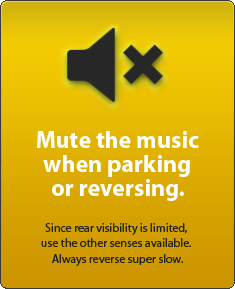News
Sleepy Maruti XL6 driver crashes into ditch; we stop & help
The rear passenger (wife) was not wearing belts and was thrown around inside the car. This resulted in head and nose injury (and possibly some neck injury as well). This is a prime example highlighting the importance of rear seat belts.
My dashcam recorded this incident last week in West Bengal, on NH 314 - Purulia to Bankura. A car on the opposite direction veered off the road and into the ditch on my left, then it jumped over a heap of sand/loose soil and crashed onto a large tree.
I have zoomed in on the video (and thus lost some quality) and slowed it down a bit for you to see the incident better.
We were fortunate enough to be a few seconds late, else it would have hit us head on. It was my son (fellow BHPian Artoodeebag) driving my car, and was pretty shaken by the incident.
Despite the head-on impact with the tree at an estimated speed of above 50 km/h, the car (a Suzuki XL6) held up pretty well. The passenger cabin was intact and the steering column and pedals were all in place. The front doors, though slightly jammed could be opened without much trouble. The engine compartment and the front crumple zone was pretty badly damaged though. The front airbags got activated and saved the passengers well.
We stopped and joined in the rescue operation. With the help of some locals and a few military personnel from a passing truck convoy, the injured family was extricated. All 3 of them (middle-aged driver, his wife and his adult daughter) were in shock but were in their full senses. The wife had a head injury and had some blood loss from a cut on the forehead and nose, while the husband had waist / leg injury but no major bleeding. The daughter did not have any major visible injury and could walk out of the car on her own.
Both the front passengers (man and daughter) were wearing seat belts which saved them from any catastrophic injury. The rear passenger (wife) was not wearing belts and was thrown around inside the car. This resulted in head and nose injury (and possibly some neck injury as well). This is a prime example highlighting the importance of rear seat belts.
A local traffic guard called up the highway emergency numbers. They figured out that it would take more than an hour for the ambulance to arrive.
Assessing the injury, especially the head injury, I thought it would be best to have the injured hospitalized within the golden hour. So we decided to pick them up and drive them on to the nearest hospital some 30 km away at Bankura town.
On our way to the hospital, I enquired if the man remembers what had happened. He said - "My head was reeling and then I don't remember". Seeing his otherwise stable condition after the accident and at the hospital later, I think the "head reeling" part of his statement may not have been the most truthful one. He started driving from Nadia district and had already crossed Bankura town, so it must have been at least 6 hours of driving already and they must have started early in the morning. This particular stretch of road is not a 4-lane highway, but is a very well planned and well made 2-lane section. The surface is butter smooth and the entire 50 odd km is pretty well marked. So I infer that is must have been fatigue and sleep that was responsible for the "I don't remember" part of the statement.
We reached the hospital after around 30 minutes. It was a government hospital, but the staff were quite helpful. We had to spend a few minutes for the stretchers to be arranged, but once we could get hold of one, the ER doctors could immediately start attending the injured. We waited some more time to check the condition of the patients. They seemed to have stabilized after the doctors started their treatment. Meanwhile, on our way to the hospital, the man had contacted his son over phone, who immediately mobilized a few friends and started for the hospital. They were expected to arrive within a few hours.
We had one last job to do - arrange a safe place to off-load the luggage and other belongings of the family. On request, the police outpost beside the ER agreed to keep the luggage in their room for the time being. So we off-loaded the bags there and went our way.
We wish a speedy recovery to the family.
The dashcam footage indicated the following timeline:
- 12:51:02 - 51:07 - Car starts veering off track and crashes into the tree
- 12:51:23 - We stop and I ran towards the crash site
- 12:56:50 - My son starts turning the car around to pick up the injured
- 13:02:12 - We start driving towards the hospital
- 13:35:50 - We reach the hospital ER
- 13:45:00 - We started back tn our destination for the day - Bishnupur
Lessons learnt:
- Seat belts - must be worn even for rear-seat passengers.
- Sleep and fatigue can be a killer. Never drive when you are tired or didn't have enough sleep. Even if you may not feel it, it is always recommended to ensure you have had at least your usual hours of sleep on the previous 24-hour period before starting for a long drive.
- Take a break after every 3-4 hours of driving.
- 10-15 minutes of power nap actually helps rejuvenate your body.
- Chew a chewing gum or take some Wasabi nuts while driving. This helps in staying awake and in full senses.
- Keep some energy drink handy and drink some when you feel tired - Strong freshly ground coffee works wonders for me, but it keeps me awake even at night after 10 hours of driving. So if I have plans to drive the next day, I don't take coffee.
- Keep talking with your co-passengers and make them aware of spotting signs of fatigue in your speech - slurry or incoherent speech indicates fatigue.
These are the words of BHPian sadnabrina. Thanks for sharing.





.png)











